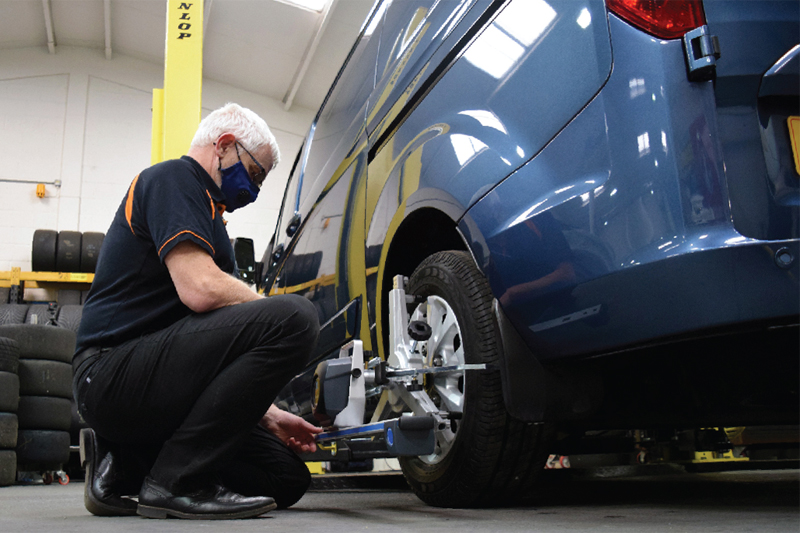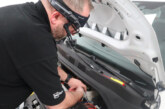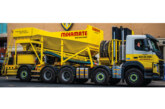
Commercial vehicle workshops must be aware of the safety-critical nature of suspension work, otherwise they could find themselves liable. Absolute Alignment explains the process workshops should undertake and how it can help.
Advanced Driver Assistance Systems (ADAS) have been around for a while, and workshops are now aware of the implications for their own working practices. Having started in premium car brands, ADAS features are featuring more and more in various forms of commercial vehicles and light vans.
Commercial vehicle workshops realise the growing importance of working practices in relation to ADAS, suffice to say that the liability ramifications of undertaking suspension work without rechecking wheel alignment and ADAS sensor calibration could be serious. With many ADAS systems relying on steering angle or rear axle thrust angle, if either of these were out of specification due to work completed on a vehicle, where would the liability lie?
Lane drift warning is common on cars and is another tool in the HGV’s armoury too; some systems will even actively steer the truck back onto the road if it looks likely it will drift onto the verge. Adaptive cruise control – where the vehicle’s systems keep constant distance between it and any objects ahead – may not be attractive to those thinking they will save fuel by tailgating, but the road safety benefits are obvious.
So, in the event of an accident, the question would be was the driver misinformed by the ADAS because it was calibrated wrongly? If workshops have carried out work on a vehicle but not calibrated the system correctly, the next question could be who does the liability rest with.
For workshops, best practice clearly identifies wheel alignment as part of the total ADAS calibration procedure. Absolute Alignment’s Bluetooth Pro Wheel Aligner can handle vans and rigids up to 7.5 tonnes, and the Aldershot-based outfit can supply the Bluetooth Commercial Vehicle Aligner for larger vehicles, making your workshop a one-stop alignment and ADAS centre.

If your workshop does not have some means of ADAS calibration, either in-house or through a commercial partnership, it is time to review your practices. How can you send a vehicle out after even minor suspension work without checking that it has had no effect on safety-critical systems? Absolute Alignment has produced innovative solutions to ease integration with many major ADAS calibration equipment providers, with much of it in stock and ready to go.
What of the future?
Fleet users can see more exciting ideas coming down the road and some hauliers are already finding a reduction in costs due to ADAS. Continental has claimed that its eHorizon product – which is linked to GPS maps and constantly monitors the terrain ahead – automatically adapts driving style and speed to maximise economy and has saved an estimated one billion litres of fuel between 2012 and 2019.
Imagine all that saving going to waste if a truck’s alignment was just a few millimetres out. For example, the US EPA has discovered that a tiny error in wheel alignment can take 7% off fuel efficiency, showing that technology can only save money as part of an all-round approach. Absolute Alignment has a range of equipment that can cope with your whole fleet.
For now, this is all about making sure the driver is aware of prevailing speed limits, but how long will it be before the Advanced Driver Assistance Systems become autonomous driving? More building blocks are being put in place every year. ADAS is here to stay, and the opportunities for the astute workshop are huge.








